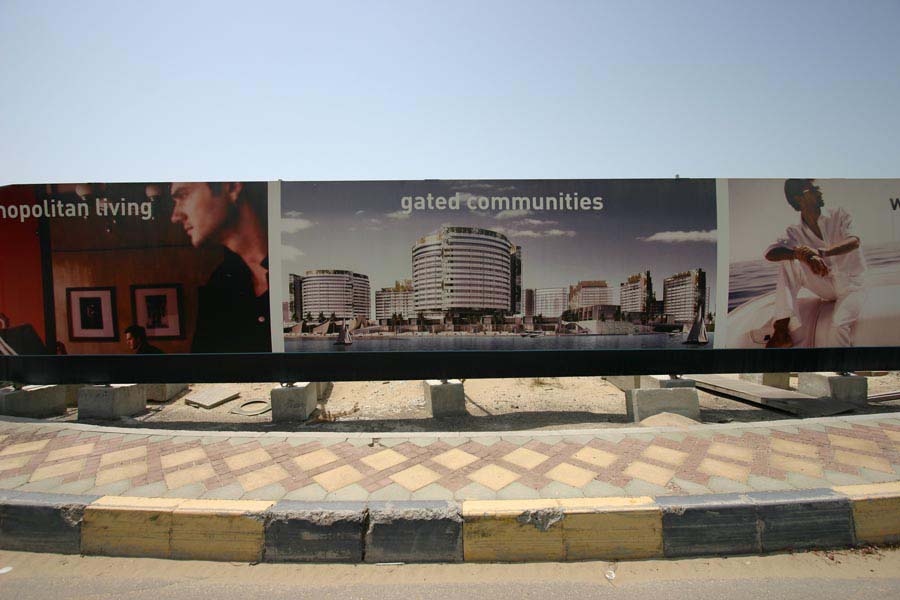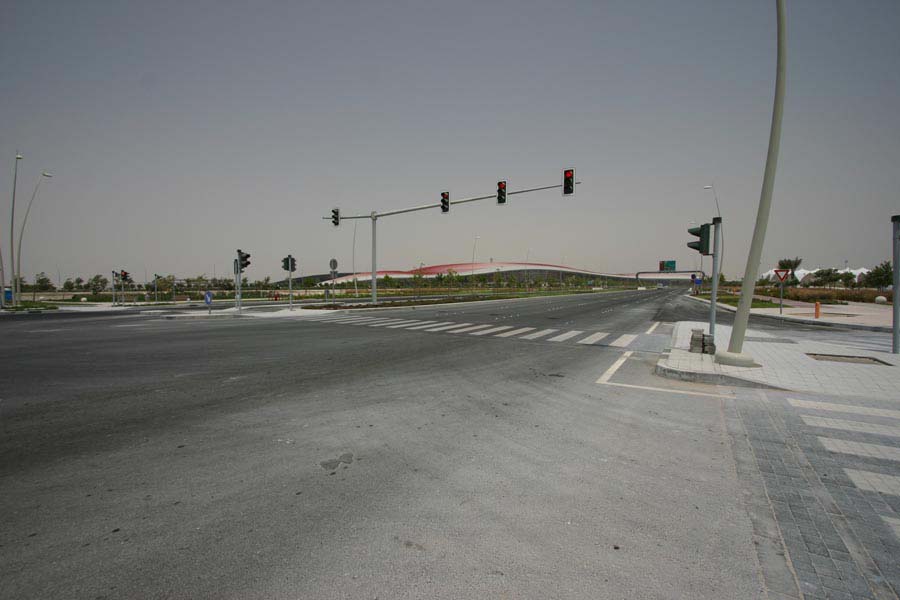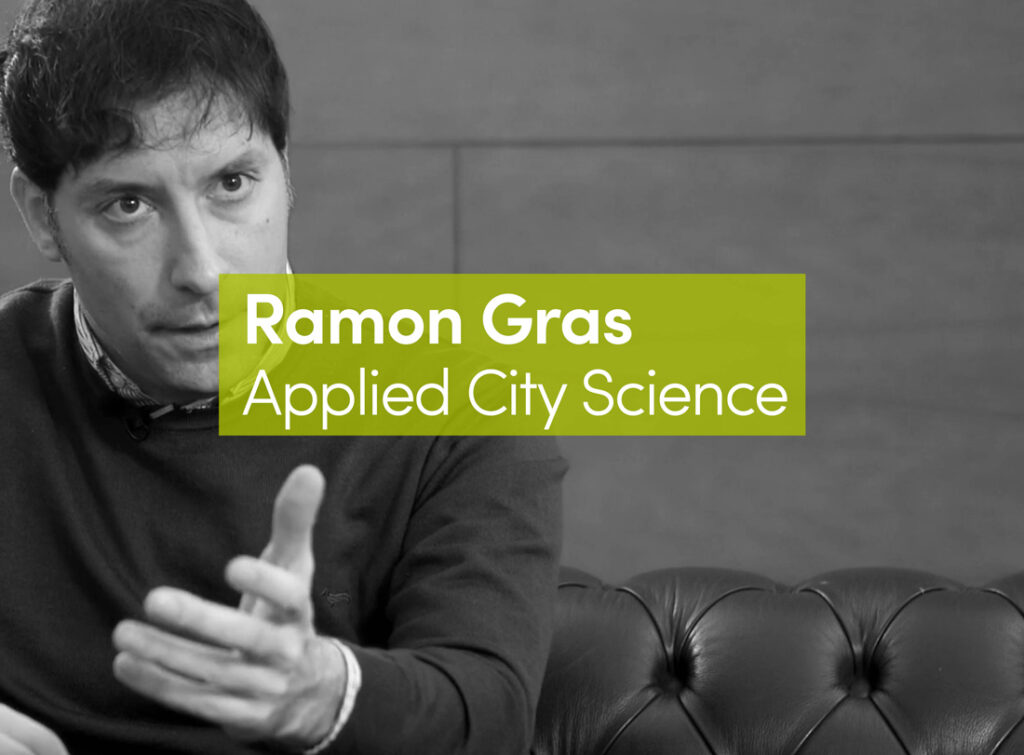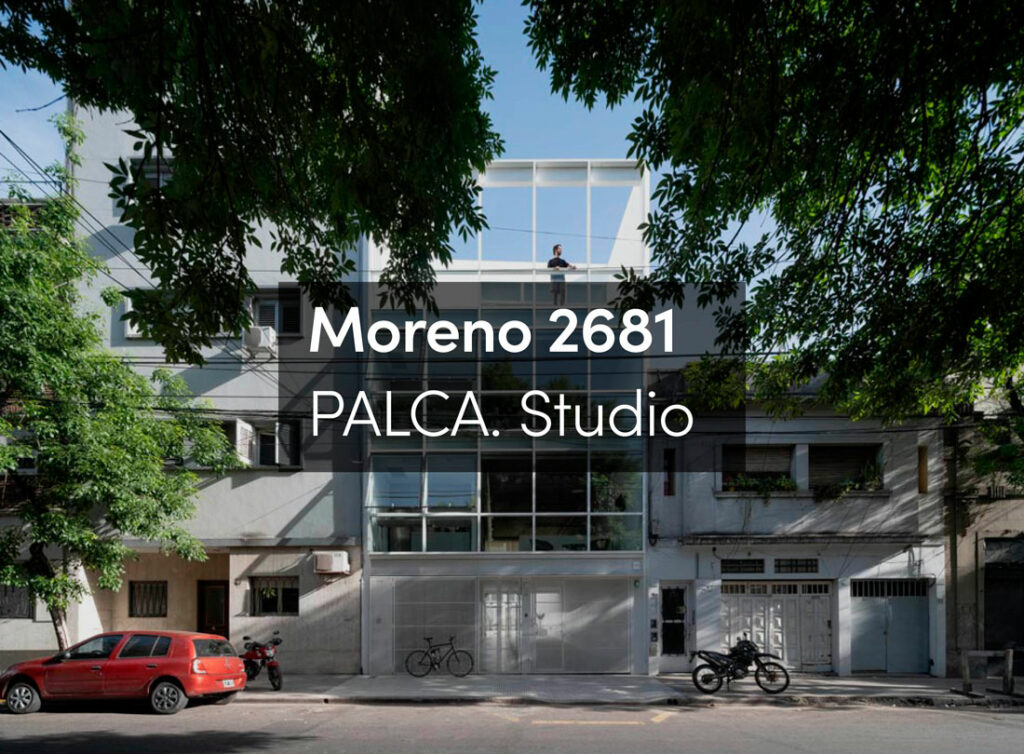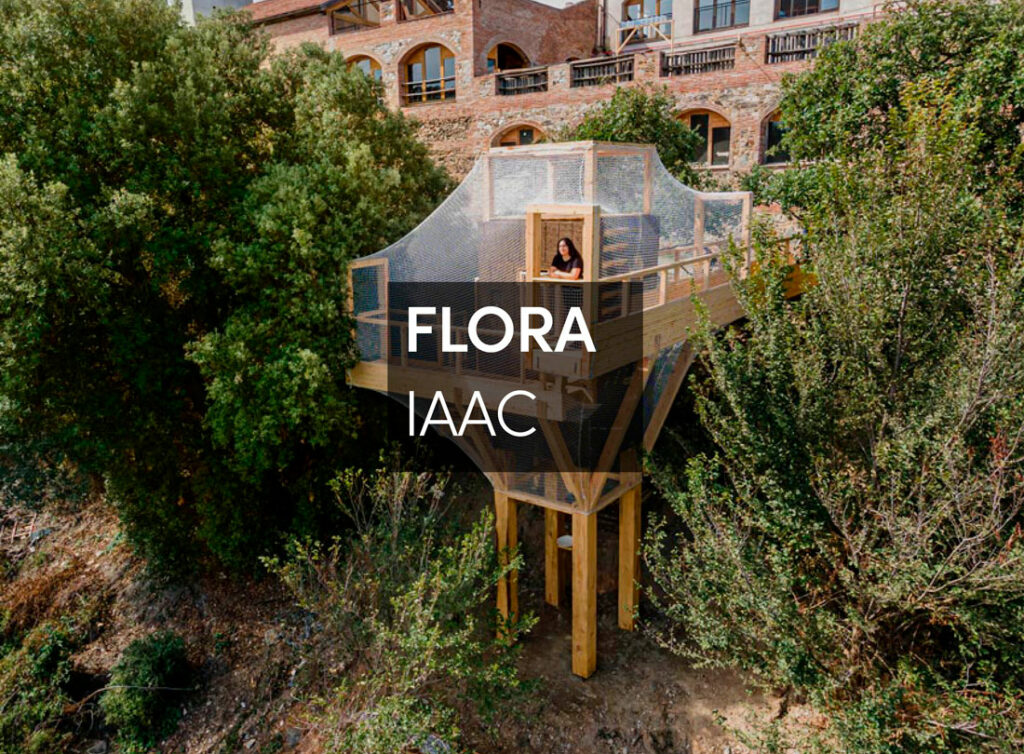Masdar City was launched to immense publicity in the presence of world leaders at the Cityscape Abu Dhabi 2007 event and can now celebrate its 8th anniversary as one of the most spectacular future eco-city models ever presented with a solemn promise of almost instantaneous implementation. Envisioned as a gesture of global leadership and based on master plans by Foster + Partners, Masdar City was conceived as a structurally advanced and technologically innovative zero carbon, zero-waste city for 50,000 residents and 50,000 daily commuters powered entirely by renewable energy. It is located at a site next to the airport in Abu Dhabi, directly plugged into a planned network of mass transportation and organized as an internal, groundbreaking, multilayered transportation system free of any fossil-fuelled vehicles.
The 6 km2 large new town aimed to define a new set of standards for sustainable development. The master plan explored modern interpretations of traditional Arab architecture adapted to the local climate, and the project even promised to comply with the One Planet Living principles for sustainable development advocated by Bio Regional and WWF (Masdar 2010a: 6).
The scope of the project was simply stunning, and, within a very short time, Masdar City became a relentlessly repeated reference and virtual blueprint for future sustainable development. The strong political backing from the Abu Dhabi Government and an almost perfect timing triggered high hopes for Masdar City. The world economy was at an all-time historical peak and the strong belief in large-scale real estate projects as the cornerstone of urban development was still intact. Oil prices were rocketing, and the Abu Dhabi government-controlled investment companies behind Masdar had an almost unlimited financial credibility. Unlike earlier grand eco-city projects, like Dongtan north of Shanghai, things were actually happening very fast. On-site construction began in 2008, less than a year after its official launch, and shortly thereafter the first test modules of the photovoltaic arrays were up and running. A prototype of the inner city Rapid Personal Transport (RPT) vehicle was unveiled at the World Future Energy Summit in 2009. The first building on-site designed by Foster + Partners, the LAB facilities and student accommodation for postgraduates at the Masdar Institute of Science and Technology (MIST) – a non-profit research and development collaboration between Massachusetts Institute of Technology, MIT and Masdar – were rushed through and almost completed in September 2010 when the first group of students moved in.
Meanwhile, the collapse of the world financial market in 2008 evidently started to cause turbulence for the Masdar City project. Numerous reports about expected delays in the forthcoming phases, financial readjustment of the $22 billion budget and modifications of the original scheme began to appear in newspapers around the world. Spokesmen and various officials from Masdar started talking about entering a ‘pragmatic phase’ in which every aspect of the original vision had to be carefully re-examined and tested against more cautious feasibility studies. The construction of the Masdar Headquarters, designed by the Chicago-based firm Adrian Smith + Gordon Gill Architecture, was stopped right after piling and postponed. The German/Australian-based LAVA Architects’ winning design for the Masdar City Centre has not been implemented. The unique Personal Rapid Transit (PRT) system developed by the Italian firm Systematica might be limited to the site of the MIST research building, with the possible consequence that traditional cars with combustion engines will have to enter Masdar City to be used for internal transportation. The idea of using cooling towers as a natural ventilation system has been abandoned, according to Nawal Al-Hosany, former Associate Director of Sustainability for the Masdar property development. She has also called off any onsite windmills as well as the initial proposal for covering the whole city with rooftop solar panels. In October 2010, the new (now also former) Director of Masdar, Alan Frost, told local newspapers that the plans to generate all of Masdar City’s power on site were being reconsidered. The mass of low and compact residential buildings replicating the narrow, shaded streetscapes of a traditional Arabian walled city has been questioned in favor of possible high-rise buildings, and several other fundamental alterations of the project have been announced. The final completion date of 2016 has been postponed until an uncertain future date in order to grow ‘organically’ with market forces (Mandel 2010). Quite a few high-ranking staff members have left the project, including one of the initial masterminds, the former Director of Property Development, Khaled Awad. The new people in charge are now trying to ensure that the aim and the commitment remain intact. The project has clearly entered a new era of uncertainty. The only definite prediction that can so far be made about Masdar City is that it will never be built according to the original master plan. So let us use this critical moment for the Masdar City vision to pause, look back and ask some questions.
Context of Suspended Disbelief
The last ten years of rapid development and the vast number of spectacular projects actually being built in the UAE have created a constant situation of suspended disbelief in the region. Everything seems to be possible in the Gulf, and even the most unbelievable plans are taken for granted. The sheer speed and unlimited potential of oil money backed by a completely unrestrained power structure have blurred any clear distinctions between the virtual and the real. Most of the fabulous projects announced in the UAE constitute a new virtual design reality that is admired worldwide. The Masdar City PowerPoint presentation has already become the most enigmatic simulacrum in the collective awareness of sustainability. A quick Google search on Masdar City back in 2010 resulted in more than five million hits, which somehow confirmed the project’s celebrity-like prominence. Today the number is down to about half a million hits. Despite this downfall the Masdar City project has become an almost mandatory reference or benchmark for any sustainable development discussion. But what kind of open-source information is actually available about the matrix of Masdar City? What are the solid facts behind the endlessly repeated visionary statements, fancy computer animations and utopian proclamations? What are the specific means and methods? Where can we find detailed sections and plans?
A good place to start online research for real content behind the catchy bird’seye view renderings would of course be Masdar’s homepage and the website of Foster + Partners. The information provided by Foster + Partners is very limited. They have a brief résumé of the project and a few illustrations. The Masdar website takes a couple of hours to explore if you read everything carefully and watch all the promotional videos, but it does not display any specific content. The many subcontractors would be another important source of information, but Foster + Partners has asked them to sign a confidentiality agreement, so they do not really offer a lot of additional information. A major player in the process, like the German eco-engineering company Transsolar hardly reveals any facts about the project on its website. Someone has edited some of the bits and pieces of available information into a short Wikipedia narrative giving a straight no-nonsense and comprehensive overview; but there is still contains no real substantiation, such as detailed sections and plans. Then, there are an almost endless number of online newspaper articles to discover. But the fact is that any open-source information about Masdar City I have accessed so far, including various articles in leading architectural magazines, can more or less be boiled down to some slightly different digestions of the same superficial media release material from Masdar itself. One of the primary sources of information available for the general public are some PowerPoint presentations and the brochure ‘MASDAR CITY – one day all cities will be built like this,’ (Masdar 2010a), which offers a bold statement about the overall vision from the ruler of Abu Dhabi and some additional remarks by company executives, as well as selected diagrammatic representations of the basic schemes and a dozen different renderings. However, the great projection of the eco-city of the future does not reveal any essential details.
Masdar City is like a gorgeous mirage in an endless desert of rumors and spam. It is a great promise you can choose to believe. New pioneering ideas about future sustainable development are of great interest – not just among architects. In the last couple of years, many researchers and journalists have interviewed the key persons involved in the project and several have actually been on-site to try to uncover the reality behind the stunning renderings. A lot of thrilling reports have been published on Masdar City as a symbol of radical change, and quite a few critical articles have been written about its political context, the violations of workers’ rights, its hidden ethical dilemmas and the project’s many paradoxes. But, so far, it seems no outsider has yet managed to penetrate beyond the very thin layer of infotainment provided by the official PR channels. Masdar City, the world-famous virtual future eco-city, seems to be protected from any in-depth investigations by a highly efficient firewall. The inquisitive community of design and planning professionals dying to learn from this promising project is still waiting to get any substantial knowledge about its matrix. If Masdar City really is such an eminent solution to the future of urban development, its inventions should not be kept so covert – at least in my opinion.
City without Citizens
I have by coincidence seen a glimpse of the confidential and voluminous Masdar project documentation produced by Foster + Partners and the team of subcontractors – but I was not allowed to read it or to publish any parts of it. I went to Masdar City in 2010 with high expectations, but was not allowed to take any pictures on-site. The question is: why does this outstanding conglomerate of state representatives, world-leading architects, specialized engineers, business-minded environmentalists and corporate city-builders insist on such strict control over substantial information?
Two explanations come to mind. Firstly, the Government of Abu Dhabi and the acting agents involved in Masdar are not exactly open and transparent organizations. The UAE is number 86 out of 175 on Reporters Without Borders’ (RWB) 2009 Press Freedom Index. The local power structure is geared to keep a firm grip on the media. ‘Those who publish “dishonest” news that could “mislead public opinion” and “harm the country’s economy”, could be sentenced to pay fines of up 500,000 dirhams (€103,400)’ (RWB 2009). The Government officials working for the company responsible for the Masdar City project or any employee onsite could be accused of harming the country’s economy if they engage in public debate about the project or question its general conditions.
Secondly, Foster + Partners has managed to obtain copyrights for the Masdar City design concept and have no incentive for sharing their business secret with anyone who does not pay up front. The question is: How can someone copyright a city? Because: Masdar is not a city in the conventional understanding of the term. It is a sophisticated, large-scale real estate eco tech development project, and the physical master plan is essentially an illustrated business model, built by the Abu Dhabi Future Energy Company as a private property with a single owner. Masdar City might possibly one day be both lively and dense. The master plan has a clear aspiration to represent some of the programmatic complexities of a ‘real’ city. It will have housing for invited guests, luxury apartments for CEO’s, lots of shops and offices, (maybe) a Rapid Personal Transportation system free of fusil fuels and even an off-shore branch of MIT. It will most likely be a future cluster for private companies operating in a special economic zone with lucrative tax exemptions. Masdar will be ‘a safe and pollution-free haven’ and ‘a world-class working and living hub’ for an exclusive elite. It will have almost everything an affluent city has including green spaces, funscapes and great vistas. Masdar City does not even have to deal with heavy industry, chemical plants, polluting agriculture or even housing for construction workers from the Third World. It will perhaps have plenty of wealthy neighborhoods with lots of tenants, an influx of expats and other visitors, but no citizens. It might one day have some great streetscapes and maybe also a great city centre designed by young and skillful architects, but it will never have any real public spaces. The Masdar City brochure promises ‘quality of life’, so maybe universal human rights principles will apply for the many researchers staying at MIST while exploring new technical solutions for a sustainable future – but maybe not. Perhaps the future female population of Masdar City will not risk the death penalty by stoning for adultery. [1] Who knows what kind of jurisdictions will rule in this great privatopia?
Anyway, the Masdar Initiative does not really seem to be concerned with civic aspects of cities, public spaces, or urbanism as a collective encounter. The major endeavor for the Masdar Initiative appears to be commodification of the ‘future eco-city’.
Well then, can lessons be learned from Masdar City and used elsewhere? Definitely – but the Masdar City scheme is not intended to become shareware.
A Political Autopsy
The Government-controlled organizations behind Masdar are ruled by an ideology of daily adjustments. Decisions are made rigorously top-down and interference from lower levels is neither expected nor tolerated. [2] The ruler can make glorious proclamations and change them overnight without any questions asked. The totalitarian and nepotistic systems in the UAE can produce 365 new prospects for the future a year, but they have no public constituency and therefore no obligation to be devoted to any single one of them. The prospects of pronounced futures are constantly shifting, creating an extremely condensed history, suffering from immediate amnesia that is accelerated by the radical changes in the physical urban fabric. The number of fabulous futures not happening will, be by far, the vastest chapter in the (unofficial) history of the UAE. The overall logic behind any visionary statement launched by the system is ultimately to sustain power and is therefore usually disguised by differing rhetorics of legitimization, which are often quite inconsistent.
Masdar City is no exception to this rule and is now, unfortunately, just one out of hundreds of projects that are delayed, on hold or under revision. The promise to ‘build the eco-city of the future’ by 2016 or later is a meta-statement, and it is practically impossible for any outsider to know the real explanation as to why this once great promise has been completely revised. Foster + Partner’s original master plan for Masdar City from 2007 will, for several concealed reasons, never be realized, even though its fast-track implementation process was part of the Government guarantee. The project is now in a kind of post-mortem phase, in which even minimal achievements are interpreted as signs of life for the eco-city of the future. The MIST is now the anchor of the diminished project, and so far Masdar City is more like an isolated campus protected by barbed wire. Students and faculty have already moved in. The MIST is now operating on-site and offers a number of Master of Science programmes. The MIST has promised to be ‘committed to fostering freedom of education, learning and expression’ (Masdar 2010b: 17); and it will be interesting to see how this policy will encounter the political realities in Abu Dhabi. I personally do not know any academic working in the UAE who feel free to speak openly about matters relating to politics. Eckart Woertz, the former Director of Economic Studies at the Gulf Research Center in Dubai, has argued that neither Abu Dhabi nor Dubai are likely to produce a truly open, innovative society. ‘The liberal lifestyles needed for that to develop organically do not exist here, given the strong conservative traditions and the UAE’s proximity to Saudi Arabia, where fundamentalist mind-sets are widespread’ (Miller 2008).
Despite the sudden death of the initial vision, the original master plan for Masdar City is still interesting and the inventions created by the team of architects, engineers, traffic planners and so on will most likely be used in other places. One of the technical pioneers behind the scheme, Matthias Schuler from Transsolar, put it this way: ‘In a certain way, my personal strategy at the moment is like: OK, we have to push other examples so that – if Masdar dies – we can say, OK at least it initiated a process. It was a kind of great path maker for this kind of idea. It is astonishing how fast Masdar and the idea about Masdar City was spread around the world. One of my conclusions is: people are dying to see examples’.
Outside the Perfect Equation
Masdar City was meant to be the ‘physical embodiment’ of a strategic attempt to develop and diversify Abu Dhabi’s leading role in energy supply by establishing a new economic sector building on clean technologies and renewable energy solutions. Abu Dhabi Future Energy Company, which is building Masdar City, is a subsidiary of Mubadala Development Company, which was established by and is owned by the Government of Abu Dhabi. Mubadala and other Government controlled development companies operating in Abu Dhabi have huge project portfolios, and Masdar City is just one out of several large-scale developments forming a future miniature ‘Randstad’ [3] in Abu Dhabi. The overall plan is to link the existing city centre in Abu Dhabi and the international airport with a series of new dazzling projects. The biggest hub in this new loop will be the Saadiyat Island [4] – an entire new tourist landscape full of resort spaces, five-star holiday lagoons, a cluster of over-the-top luxury villas, large condominiums, golf courses and marinas. Most distinguished is probably Saadiyat Island’s cultural district, a true wonderland for ‘world architects’ (Hornsby 2009), where Jean Nouvel has designed a new Louvre, Frank Gehry a new Guggenheim Museum, Zaha Hadid a Performing Arts Center, Tadao Ando a Maritime Museum and Foster + Partners the Zayed National Museum to honor the ‘great commissioner’ and leader of Abu Dhabi. Another prominent development in the ‘Randstad plan’ is Yas Island, just 3 kilometers north of Masdar City. The Yas Island project is 25 square kilometers, or more than four times as big as Masdar City. Partly dedicated to motorsport, Yas Island is the location for the newly opened Formula One Grand Prix racetrack and the world’s first Ferrari theme park.
The big-foot path of unconstrained consumption and the constant demand for growth in Abu Dhabi are hardly representative of a sustainable perspective from any point of view. Seen in comparison with all the other mega-projects launched in Abu Dhabi, Masdar City does not really imply any overall change – but it certainly plays an important role as a tactical diverter of skepticism. The eco-city of the future has already become a strong brand for Abu Dhabi, despite the emirate’s current status as one of the world’s worst carbon and solid-waste polluters per capita. The true magic of Masdar City is its ability to repress almost everything going on outside its perimeter walls, including its own neighboring entertainment attractions like the Ferrari theme park, the Formula One racetrack and all the irrigated golf courses on the island of happiness. Masdar is plugged directly into Abu Dhabi International Airport, and most of Masdar’s future inhabitants will be flying in from around the globe – along with many of the goods demanded by the future inhabitants. According to Climate Change Corp (CCC), ‘There will be no limits to individual energy consumption, and residents will be able to drive cars as long as they are parked outside the city’s boundaries at all times’ (CCC 2008). Half of the proposed population of Masdar City will be daily commuters who will leave a giant fleet of Hummers, SUVs, four-wheelers and other traditional cars in nine huge parking structures surrounding the car-free city. All the fresh water used in Masdar City will be desalinated seawater coming from natural gas-powered plants sending millions of gallons of chemically polluted brine back into the sea, ultimately exacerbating the existing environmental problems for marine life in the Gulf.
Embedded in a worst-case scenario, Masdar City is like a perfect fiction totally detached from the outside world. ‘The result, Mr. Foster acknowledged, feels a bit like Disneyland. “Disneyland is attractive because all the services are below ground”, he said. “We do the same here – it is literally a walled city”’ (Ouroussoff 2010). The Masdar City brochure informs us about all the included programs, services and entertainment venues offered by the great scheme, but nothing about what is being externalized. The boundaries of sustainable development are indeed very difficult to define – but conceiving the ‘eco-city of the future’ as a theme park is like solving social problems with gated communities.
Strategies of Authoritarian Enlightenment
The Government-run companies behind the Masdar Initiative claim to provide ‘a blueprint for cities around the world striving for sustainability’ (Al Jaber 2009). Being primarily interested in sustainable architecture and planning – and eager to engage in research on the new design solutions and the technical innovations created by Foster + Partners, it might seem totally irrelevant for a private company to embrace the complex political issues implicit in the local planning process. But, unfortunately, Masdar City is the physical embodiment of both big business and high politics in the UAE. Even in its current ‘pragmatic phase’, Masdar City is obviously part of a much larger strategic plan by the Abu Dhabi Government to develop and diversify its economy and consolidate the UAE as an advanced and reliable player on the global tourism and real estate development market. It would simply be too naïve not to frame the discussion of Masdar City by reflecting on its initial conditions and the overall political and economical context in which the city will operate.
On the other hand, many architects, including Louis Kahn, have argued that the purpose of architecture is not social reform. That is a clear position! But Masdar claims to transgress aesthetics and go beyond the clean techno fix solutions advocated by technocrats. Social issues and ideas about ‘quality of life’ are being described as an important part of the vision. ‘Central to this shift is the adaptation of the principles of “One Planet Living”, a global initiative by Bio Regional and the WWF, based on the idea that it is possible to live within ecological limits and still improve the quality of people’s lives. One Planet Living communities, such as Masdar City, aim to put principles of sustainability into practice’ (Masdar 2010a: 6). To get the One Planet Living label, Masdar City needs to implement social justice. Principles of equity and fair trade are actually described as crucial aspects of Masdar’s branding and highlighted as official policy in the glossy brochures. These surprisingly humanistic proclamations from a regime known for its ‘problems’ with basic human rights might seem paradoxical, which opens up some difficult questions. Is clean-tech and good design all it takes to achieve sustainable environments and quality of life? Is sustainability simply a matter of implementing a new set of technological procedures? Or is the very idea of sustainable development embedded in the notion of enlightenment, secularization and modernity?
Mona Abaza, an Egyptian sociologist and Islamologist who has studied recent cultural development policies in the Middle East observes that: ‘To counteract the “dark” Islamists the government has appropriated the discourse of an “authoritarian Enlightenment” that is no less authoritarian than the Islamists it attempts to counteract. On the other hand, the Islamists, by appropriating some of the Western thinkers (like, again, Michel Foucault and the Frankfurt School), seem to reverse the arguments and claim the possibility of an “Islamic enlightenment” that argues against a historical linearity with the West and advocates the compatibility of religion with reason’ (Abaza 2006). According to both discourses, addressing ethical, moral and political issues such as the violation of human rights, questions of gender equality, nepotism versus good governance and transparency can be seen as evidence of a highly inappropriate kind of post-colonial interference. Following this line of thought, the only ideas ‘Western architects’ ought to promote outside their own cultural sphere are in essence, technological solutions to pre-defined problems. Reducing architecture and planning to a kind of applied science might seem depressing from a modern enlightenment perspective, but for political agnostic architects, it is certainly opening up an exciting parallel world where ‘important’ techno-fix experiments can be done without any normative implications. The question is: Who are the beneficiaries of this new kind of eco totalitarianism in Masdar City (and Dongtan)? It cannot possibly be the slave army of unskilled construction workers from the Third World. They will be kicked out as soon as the future eco-city is built.
Move beyond Greenwashing, Please!
Since the foundation of modern sociology at the beginning of the 19th century, it has been widely acknowledged that all human activities happen within a societal structure – and that all History therefore cannot be reduced to one single person’s genius decisions (Simmel 1998: 65). This characterization does not seem to be appropriate for the globalized city-states in the UAE. In this rich and booming part of the world, societal development appears to aspire to re-establish some kind of feudalistic principles, where up to 90% of the population are outlaws and the cities are constructed as patterns of fortified settlements. One of the great paradoxes of Masdar is that it is both a great model for a sustainable future and an anachronistic example of something belonging to a more sinister past.
Well, then, is the Masdar City design scheme developed by Foster + Partners a significant experiment for sustainable development? Yes, I believe so! Abu Dhabi is among the world’s worst carbon and solid waste polluters per capita. Their current lifestyle counts for a total ecological footprint of 11 planets. Given this perspective, even the smallest steps matter. Masdar City is certainly an important experiment for Abu Dhabi and maybe a great lesson for Foster + Partners. I just wish they would not call it a city.
